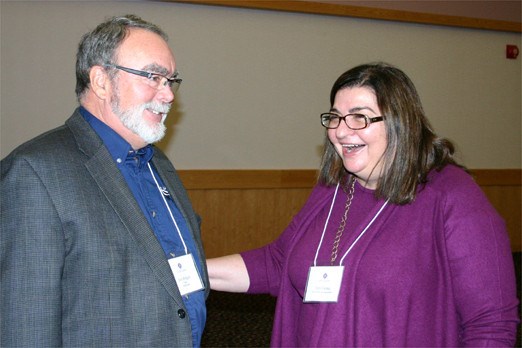The biggest housing need in the district is for single adults who need support, said the chair of the Thunder Bay District Social Services Administration Board.
“The challenge is DSSAB has a responsibility for the physical, the bricks and mortars; we don’t have responsibility for the supports,” said Iain Angus. “So how do we bring the two together?”
Supportive housing was identified as a necessity in a housing strategy report entitled Under One Roof conducted by Toni Farley and Associates. The report is based on consultations with housing providers, community- and health-service agencies, political representatives and other advocacy agencies throughout the district.
Tuesday morning, DSSAB officials presented the draft report to local stakeholders at the Italian Cultural Centre to get more feedback.
“I went out and I listened,” said Toni Farley, principle with Toni Farley and Associates and author of Under One Roof. “What I need to do now is validate my findings with the broader community because if there isn’t broader community participation and input, then I wouldn’t know if we got it right and that’s key.”
The report outlines that supportive housing is needed at two different levels. One is for people who are starting to fail both mentally and physically and need low-level supports to help meet their daily needs, said Angus.
“The other end of the extreme is supportive housing that has nursing care…that works on almost an hour-by-hour basis with the residents,” he said. “It’s a level of care less than what you would provide in a long-term care home but still needed to make the life of the individual worthwhile.”
Another goal outlined in the report is a one-window model to accessing housing and supports; it’s one that Farley said is the most exciting and could potentially be the most difficult to achieve.
The model would see an individual, regardless of their level of ability or type of needs they have, approach one organization to have their needs and issues assessed, she said.
“They will be able to tell their story only once, complete one application, to come up essentially with what I would consider a personal plan and then having someone work with them one-on-one to help them achieve that plan,” Farley said. “It’s providing the linkages and support they need to achieve the highest level of functioning and independence they can.”
She said it would require a lot of communication and commitment on part of the community agencies and both the Ministry of Health and Long-Term Care and Ministry of Community and Social Services, but it is doable and could be implemented by 2014.
Consultations with other communities in the district will be held throughout February and the public is encouraged to read the report and leave their comments online at http://www.tbdssab.on.ca. The deadline to provide input is Feb. 28, 2011.
The final report along with an implementation plan is expected to be presented in the spring, said Angus.
“The board is committed to following through on this rather than leaving it on the shelf so we made sure part of the project was a step-by-step plan on how we can implement the recommendations,” he said.
Sign in or register
- Messages
- Post a Listing
- Your Listings
- Your Profile
- Your Subscriptions
- Your Likes
- Your Business
- Support Local News
- Payment History
Registered Users
Already have an account?
New Users
Create a free account.
